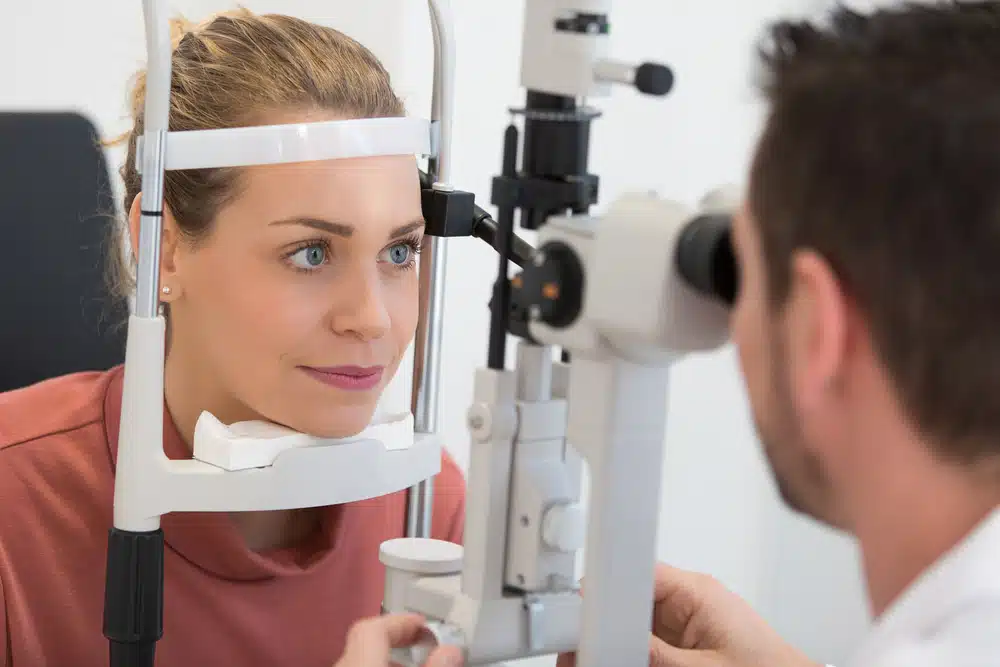Ever wonder what happens during an eye exam? It’s a test performed by your optometrist to check your overall eye health and determine any vision issues that you may have. This one-hour exam has a series of smaller tests that look at everything from your depth perception, vision quality, eye movement, along with any signs of disease. To get a closer look into the examination process, here’s a detailed list of everything that happens during eye exams.
Contents
Visual Acuity
Your doctor will test how well you can see by having you read letters on a chart at 20 feet away. The smallest letters that you can read are recorded as your acuity. A person with normal vision would be considered to have 20/20 vision. If you have 20/60 vision, for instance, you will be able to see at 20 feet what a person with normal vision can see at 60 feet.
Visual Fields
This test will check both your field of vision and your peripheral vision to detect any dysfunctions in your central or peripheral vision that may be caused by conditions, such as brain tumours, glaucoma or other neurological issues.
Extraocular Movements
In order to test your eye muscles and movement, your doctor will have you track an instrument like a pen, to see if there are any vision restrictions.
Pupillary Tests
Testing your pupillary reactions can reveal many serious health and neurological problems. The doctor will test how your pupils react and change to determine the health of your eyes and even overall health.
Cover Test
A cover test is designed to measure how well the eyes work together to fixate on a target and can help to detect lazy eyes, a loss of depth perception, or even crossed eyes.
Refraction
A refraction test can help to determine if a patient is nearsighted, farsighted or has astigmatism or presbyopia.
Slit Lamp
A slit lamp magnifies your eyes and uses a very bright light to illuminate the eye so your doctor can get a clear view of your entire eye structure. During the eye exam, they will inspect the front and back, as well as the eyelids, to look for any apparent defects or conditions like cataracts.
Tonometry of Air Puff Test
This test is used to measure the eye’s pressure. It will involve testing the pressure of the cornea. If the pressure of your eye is found to be higher than normal, it means you are at risk of developing glaucoma.
Dilated Fundus Examination
During the Dilated Fundus Examination, eye drops will be used to dilate your pupils so a tool can be used to inspect the eye nerves, blood vessels and overall health of your eye. It also allows the doctor to detect many eye diseases that cannot be seen with the naked eye.
As you can see, there’s nothing to be afraid about. What happens during eye exams are simple, routine procedures to ensure your vision is functioning optimally. If your doctor believes you should be tested, come see us at Laurier Optical. We can conduct full-scale eye exams at affordable prices.
